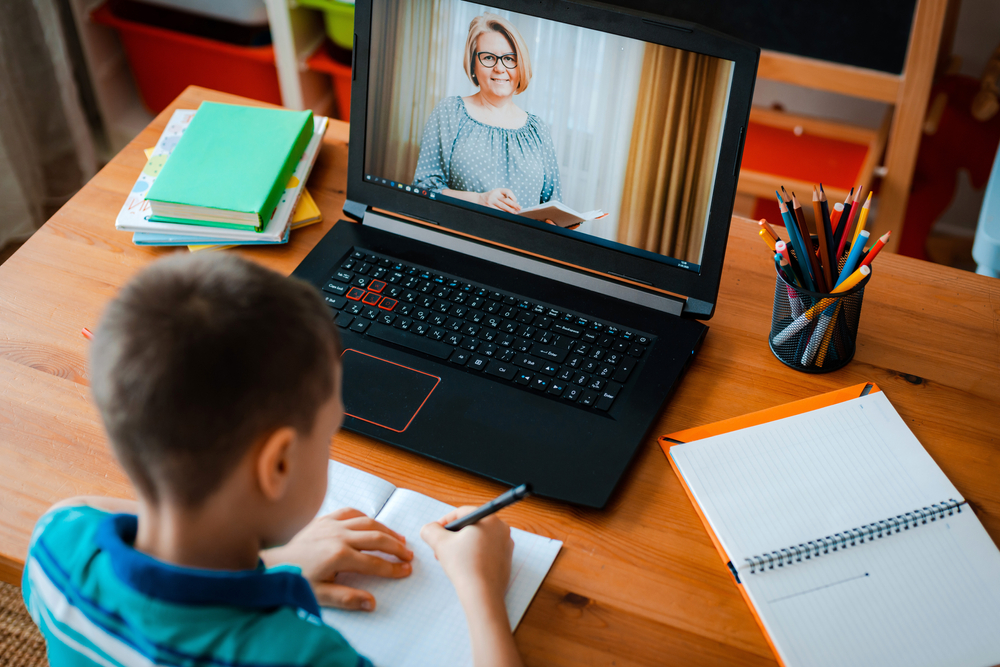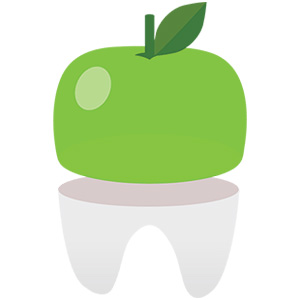 NYC remote learning is now in full swing for nearly every kid and teenager, whether they’re doing the whole day online or a hybrid schedule. As a dad and a Brooklyn orthodontist who sees a lot of school-aged patients and parents, I can tell you that struggle to adapt to remote learning is real! It can be hard for kids to focus with siblings and working parents nearby, online distractions, and a ton of changes to navigate. To help, I’m sharing some remote learning tips for parents that will improve kids’ focus and make learning at home more comfortable and effective.
NYC remote learning is now in full swing for nearly every kid and teenager, whether they’re doing the whole day online or a hybrid schedule. As a dad and a Brooklyn orthodontist who sees a lot of school-aged patients and parents, I can tell you that struggle to adapt to remote learning is real! It can be hard for kids to focus with siblings and working parents nearby, online distractions, and a ton of changes to navigate. To help, I’m sharing some remote learning tips for parents that will improve kids’ focus and make learning at home more comfortable and effective.
Create a Workspace for Your Child
When it comes to how to improve focus in kids, designating a space that’s used only for school is one of the keys. It can be tempting to have kids set up shop at the dining room table or on the couch but this often leads to distraction. When kids sit down in their designated remote learning area, it will signal their brain that it’s time to concentrate on schoolwork. Here are a few tips for carving out a digital learning nook:
- Place a desk in a quiet corner and make an area where all of the essentials are within your child’s reach. It could be in their bedroom, the living room or anywhere that’s not high traffic.
- To save space, consider going vertical and adding shelves or hooks on the wall to hold things like pencils, pens, paper, art supplies, books, and everything else they use regularly. Over-the-door shoe organizers are also excellent for storing supplies vertically.
- Carts on wheels make for the perfect learning station. They can house everything your child needs for school and you can wheel them away when they’re not in use.
- Living in Brooklyn, obviously, not all of us have a ton of room. I saw this awesome remote learning hack for creating a work area in a small space. A mom of three made cubicles for her kids with tripod poster boards. Each child has their own poster board that gives the illusion of a private workspace. The kids decorated the boards and added calendars, their remote learning schedule, headphones, a light, and more.
- Play tents are another simple, temporary way to create a separate space for kids.
Make a Remote Learning Schedule and Stick to it
A remote learning schedule gives kids the structure they need to get into school mode and it will help keep them motivated. Write down the schedule for their remote learning day and display it on a chalkboard, whiteboard, or even just a piece of paper so they know what to expect. If you have more than one child, color coding can be a great way to make things easier for kids to digest. You can find a ton of sample schedules for remote learning online that run the gamut from fairly loose to very structured. Choose what works for your child.
Maintain Those Daily Routines
Another of the best remote learning tips is to maintain daily routines as if kids are going to school. So, beyond the academic components of your child’s remote learning schedule, try keeping up with normal bedtime routines and having kids get up, get dressed, and eat breakfast at the same time each day. While comfy clothes are definitely a must, staying in pajamas won’t help in the motivation department.
Reduce the Background Noise
It’s hard to ensure it’s quiet enough for kids to concentrate when they’re doing online school, especially if you have your own work meetings, other kids or pets, or things to do around the house. Investing in noise-cancelling headphones can be really helpful since kids can plug them into their computer during classes so that they’re only hearing their teacher and classmates. If a new pair of headphones isn’t in the budget, a white noise machine can work wonders, particularly when kids are doing an assignment that requires a lot of focus. YouTube is also a great source for white noise and concentration music for kids that can play in the background to support focus.
Beat Digital Eyestrain
Spending an entire remote learning day staring at a computer or tablet screen can be tough on kids’ eyes, making it harder to stay focused. Part of the reason is because digital devices emit high-energy blue light, which is thought to cause eyestrain, fatigue, temporarily blurred vision, headaches, and sleep disturbances. To keep kids’ eyes feeling fresh, follow the 20-20-20 rule. It states that every 20 minutes kids spend looking at the screen, they should look away and focus on something 20 feet away for 20 seconds.
Having kids practice good posture and following the basics of ergonomics can also help with eyestrain, neck aches, and back aches. Additionally, blue light blocking glasses, or, if kids wear prescription eyeglasses, blue light blocking lens coatings, filter out the blue light from digital device screens. This will make remote learning more comfortable and, in turn, improve kids’ concentration. At Fresh Orthodontics, we actually made hundreds of pairs of custom blue light blocking glasses for our patients! Grab a free pair at your next appointment or call ahead to stop by to pick some up.
Take Advantage of Remote Learning Resources
Teachers are amazing! They’re also trained in, well, teaching. Many of us haven’t had that type of education or experience. There’s no shame in struggling a bit when it comes to helping kids with remote learning. Thankfully, there are remote learning resources out there, available for free or at a low cost, that can bolster your efforts. Here are a few to keep in mind:
- CovEd.org is for k-12 students who have limited resources. It pairs them up with mentors who can provide tutoring on all subjects, including many honors and AP classes. The mentors are volunteers and the service is free.
- Tutor.com has a variety of plans with different price points. Kids can connect with a tutor virtually for help in over 80 subjects. You can do a one-time session or purchase a subscription for ongoing help.
- TutorMe is another great remote learning resource if your child needs immediate help on something like a math problem. Kids can access a tutor for $1 a minute. This can be a lot more affordable than purchasing a full hour when they just need a bit of guidance.
Minimize Digital Distractions
As adults, we know when we’re working on our computer, it’s so easy to simultaneously scroll through our phone or open up another tab and browse the Internet instead of focusing on the task at hand. It’s no different for kids and teens. Digital distractions can really put a damper on their ability to pay attention and retain information. If your kids have a cell phone, have them place it in another room while they’re doing schoolwork or attending class online. There are also lock boxes with a timer that you can use to store phones. To minimize distractions on your child’s actual computer, there are a ton of apps you can try, such as:
- Freedom – Freedom blocks distracting websites and apps across all devices and you can set time limits. So, if your child has to sign into class for an hour, you can block all other sites for that time period. It’s available for both Mac and Windows.
- LeechBlock – LeechBlock is a free focus app that allows you to block or set time limits for up to 30 distracting sites on Firefox, Chrome, and Edge.
- Cold Turkey – Cold Turkey lets you limit or block access to websites, games and apps. It works on most browsers for Mac and Windows. It’s free, though there is a paid version that has additional features.
Take Brain Breaks
When trying to figure out how to improve focus in kids, taking frequent breaks might sound counterintuitive. However, kids’ concentration will quickly deteriorate if they’re forced to sit in a chair and stare at a screen for hours on end. Frequent breaks will prevent them from getting bored and overwhelmed and, ultimately, it will improve their productivity and ability to learn.
Aim to take short breaks after every 30 minutes to an hour of digital learning, depending on your child’s age, where kids can stretch, have a snack, chat with you, or do something enjoyable for a few minutes. Schedule longer breaks throughout the day to get moving or do things that are completely non-school related. Have kids do yoga, take a walk, enjoy an online gym class, or do something else active for one of the longer breaks. Physical activity will balance out all of the sitting and it’s been proven to improve focus in kids (and adults).
Speaking of Breaks, Use a Timer
Using a large timer is one of my favorite remote learning tips. A traditional timer will help kids understand the concept of time and get an idea of how long different tasks take. It’s also a good tool for helping kids focus. They know they have to put the effort into their schoolwork until it goes off and then they’ll get a break. Something like this will do the trick.
Stay Connected With Friends and Family
When kids are going to school in person, they’re socializing, seeing different people, and there’s more stimulation. Virtual learning can be isolating and the monotony can make it easier for kids to experience burnout. Spend time each day connecting with people. Call grandparents or other family members, have kids FaceTime or Zoom with friends, or go for a walk and people watch.
These are just some of the remote learning tips that can help kids focus and have a better experience learning from home. If you’d also like to learn more about perfecting your child’s smile with Park Slope braces or Invislaign Teen treatment, or you’re looking to nab a pair of our custom blue light blocking glasses, schedule a complimentary consultation at Fresh Orthodontics today!













